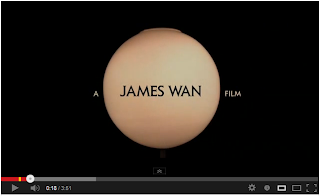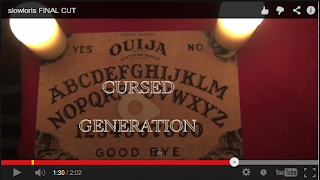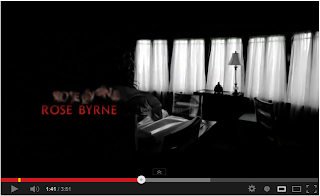In what ways does your media product use, develop or challange forms and conventions of real media products?
The generic conventions of a supernatural thriller are that the story-line generally revolves around a supernatural creature such a a ghost or a vampire.
We have used many generic conventions throughout our film opening to help convey the genre. We have done this through our choice of location, title font and mise.
Location
The location of our film opening is in an old looking house. This setting has been used in many supernatural thrillers such as 'Amittyville Horror 2: The Possession (1982)', 'Insidious (2010)' and 'Woman In Black (2010)'. These films are all set in houses.
Costume and Props
The costumes that we chose to use in our film opening link more into the generic conventions of a horror film as they are all dressed in nightwear. But this still fits well into our film as it give the audience a time frame that the scene is set in.
We used a tracking shot to show the old fashioned photos on the walls of the house. This helps to give an eerie atmosphere to the clip.
The main props that we used were a ouija board with candles placed in the corners. These are shown using multiple shot types to show their importance within the film.
Camera Work and Editing
We used an establishing shot to open our clip and help set the scene. It pans in from the right and includes the first title in the bottom left.
This kind of establishing shot is also used in the supernatural thriller 'Amityville Horror 2: The Possession', the differences being that the camera is placed on the left hand side of the house and in the foreground there is a 'for sale' sign.
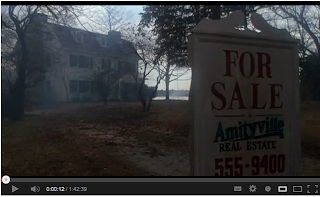
Tracking shots are another generic convention used in supernatural thrillers. They make the audience feel as though they are a part of what is going on and they are walking through the set. An example of a tracking shot used in a supernatural thrill would be in the opening of 'Insidious (2010)'.
This tracking shot moves down the frame whereas our moves up.

Close up on props is also a largely used generic convention in supernatural thrillers as they show the importance of them and possibly foreshadow later events within the film.
This is used in the opening of 'The Woman In Black (2010)'.
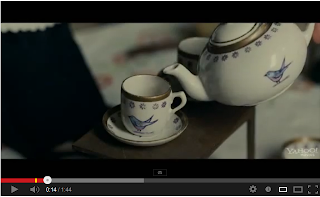
We have used a similar shot our film opening showing the candles and matches.
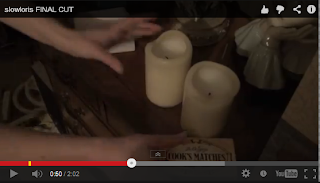
Another shot used in 'The Woman In Black' is a three person shot.

We have used a shot that is very similar to this in our opening sequence.

The only real differences between the two shots is that ours is from a high angle whereas the one used in 'The Woman In Black' is from a low angle.
Slow paced editing is a commonly used generic convention in supernatural thrillers. We have used this throughout to create a mysterious, eerie feel.
Title Font and Style
The title font that we chose to use in our opening is based on the font that can be seen on the ouija board. They are also partially incorporated as they have been placed in specific areas of the frame depending on what else is in the frame at the time.
These are the titles used in 'Insidious (2010)', they are very well intergrated as they are placed perfectly around the lamp.
This is the titles that we used in our opening sequence. They are integrated as the font matches that of the ouija board, and they have been placed so that the cursor is inbetween them. They still stand out above the clip more than the titles used in 'Insidious' and this gives our film a more independent feel.
The other titles used in the opening sequence for 'Insidious', and also in our film opening, are not integreated, the are simply placed on top of the frame.
Story-line And How The Opening Sequence Sets It Up
The majority of supernatural thriller films don't introduce the main aspect of the plot as quickly as our film did. We introduced the ouija board within the first two minutes of the film which goes against generic conventions.
How Characters Are Introduced
We also go against generic conventions with how our characters are introduced because we introduced them using dialogue within the first two mintues. The main characters are not normally shown this early on in a supernatural thriller film. This makes our film different to conventional films and makes it stand out and grab the audiences attention.
Special Effects
As our film is independent, we didn't use any special effects in the opening sequence. No special effects have been added in post-production. This goes againsts the generic conventions of most supernatural films which use special effects to animate the opening titles.
This is shown in the opening titles of 'Drag Me To Hell (2009)' where the titles appear in black smoke. Whereas our opening titles do not use such effects.






















